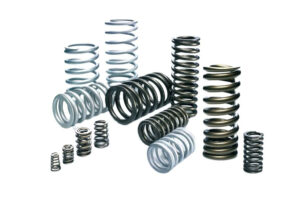Design of Compression Spring: Tips and Tricks
 Compression springs are an essential component of most mechanical systems that apply force. These springs work by compressing and absorbing energy, then releasing it when needed. The proper design of compression spring can make all the difference in how well your system functions, as well as its durability and longevity. In this post, we will explore some tips and tricks for designing effective compression springs that will meet your needs.
Compression springs are an essential component of most mechanical systems that apply force. These springs work by compressing and absorbing energy, then releasing it when needed. The proper design of compression spring can make all the difference in how well your system functions, as well as its durability and longevity. In this post, we will explore some tips and tricks for designing effective compression springs that will meet your needs.
Tip 1: Determine Design Parameters
Before you start designing your compression spring, it’s important to determine its design parameters. This includes understanding the load requirements, deciding on the material and wire size, and selecting the desired free length and solid height. All of these variables will affect the spring’s performance, so it’s important to get them right.
Tip 2: Understand Wire Materials
The type of wire used in the compression spring is an essential factor in its design. Different materials have different tensile strengths, stiffness, and corrosion resistance. It’s important to choose a wire that can withstand the loads and stresses you expect to encounter. Common materials used for compression springs include stainless steel, tungsten, and music wire.
Tip 3: Determine Spring Rate
The spring rate is a measure of the force required to compress a spring by a given amount. It tells you how much the spring will compress for a given load. This is important in ensuring that the spring will perform as expected in your application. Higher spring rates provide stiffer springs, while lower spring rates provide more flexible springs.
Tip 4: Choose the Right End Configurations
The end configurations of the compression spring are essential in ensuring proper function. There are several types of end configurations to choose from, including closed ends, open ends, and ground ends. Each configuration has its benefits and drawbacks, so it’s important to choose the one that best suits your needs.
Tip 5: Use Computer-Aided Design (CAD) Software
Computer-Aided Design (CAD) software can be a valuable tool in designing compression springs. This software allows you to simulate the behavior of the spring before it is manufactured, reducing the likelihood of errors and resulting in a more effective design.
In conclusion, designing an effective compression spring requires careful consideration of many factors, including design parameters, wire materials, spring rate, end configurations, and the use of CAD software. With these tips and tricks, you should be able to design compression springs that will meet your needs and function effectively in your mechanical systems.






